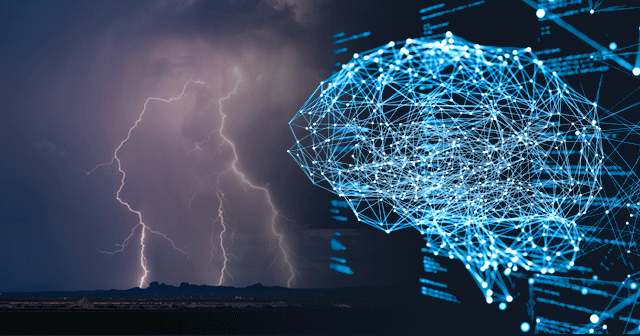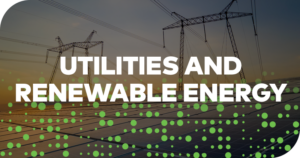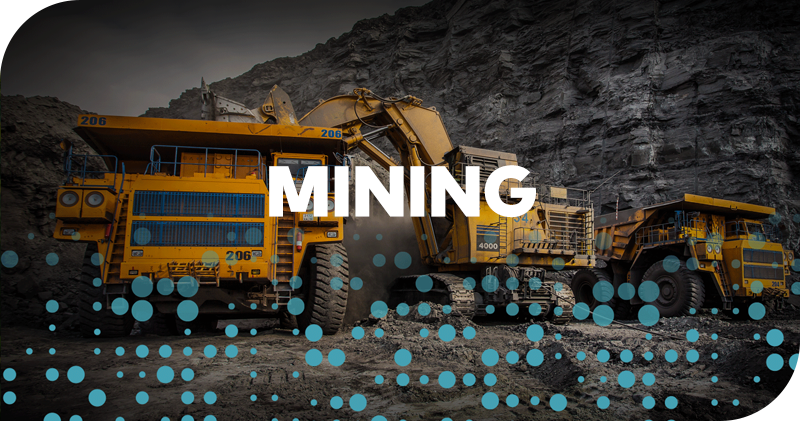The Growing Role of Machine Learning for Utilities

Modern humans are lucky to have modern tools to help us manage weather events. From raincoats to snow tires to whatever the local retailer has moved to the front of the store during the storm, weather impacts how we dress and what we do. It’s not surprising that half of Americans say they read, watch or listen to the weather forecast daily.
But we use this information for more than just the nuisance of too much sun, rain or snow. It’s also because of the risk that comes with severe weather. Is a big storm coming? Am I prepared?
It’s not too much to say that some weather conditions can have life and death impacts. And for the most part, meteorologists do a great job predicting what’s to come. Data analytics-based weather forecasting is the gold-standard of commercial forecasting – and innovations in this area over the past two decades have changed the game for utilities. But Mother Nature plays by her own rules and weather can behave in unexpected ways. Utility providers must stay vigilant in how they plan and act to ensure safety and service.
The advancement of machine learning in managing storm risks
When extreme weather events or environmental hazards occur, utilities need an effective response to minimize impact on service, while ensuring safety. Most utilities gather significant amounts of data during events to make informed, timely decisions. Weather forecasts, drones, stationary cameras, smart sensors, other IoT resources, historical data and human reporting create enormous volumes of near-real-time data 24/7/365.
The challenge comes with how to analyze the information and identify conditions that warrant action, sometimes immediately. This can seem impossible for even the most knowledgeable and experienced, multi-tasking utility managers. But for machine learning technology, it’s as simple as a key stroke.
“Machine learning combines capacity for reviewing large amounts of data and the ability to learn and adjust continuously from outcomes.”
Recent advancements in machine learning are changing severe weather and hazardous condition management. Machine learning combines capacity for reviewing large amounts of data and the ability to learn and adjust continuously from outcomes. It is ideally suited for utilities looking to upscale their risk management practices, but in a cost-effective way.
A combination of artificial intelligence and rules-based triggers set in emergency action plans can streamline activities and keep focus. Utilities get clearer guidance on the escalation level needed and where to allocate resources before, during and after an event. Setting parameters around when to request mutual assistance or when to activate personnel to a locality based on hyper-local weather conditions can all be set and triggered via machine learning.
In addition to working an emergency action plan in real time, machine learning is also invaluable to helping adjust and improve plans. As more history and data is captured, machine learning and artificial intelligence can iterate existing plans informed by real-world results. Each variable can be analyzed in concert to get to the truth of the matter and inform better decisions.
Challenges are bigger than ever before
Advancements in machine learning technology are coming along at a serendipitous time. Climate change is a huge disruptor that seemingly leads to more hard-to-predict severe weather events. In fact, outages due to weather events have increased approximately 64% in the last decade, according to a Climate Central analysis. Combine that with the fact that U.S. utilities, including the electric grid, are aging and utilities have more challenges than ever before.
Using machine learning to manage through the weather and subsequent outages is more needed than ever.
The bottom line – faster decisions can save lives and money.
Standards and expectations for risk management are growing for utilities. Utility companies need to make many decisions that must strike a balance between costs, safety and service. Safety usually wins out, but it doesn’t need to be at the expense of cost and service. Machine learning can provide an undeniable ROI by not only streamlining costs and service but can ensure a higher level of safety. And if that information is available via API integration, energy and utility companies can more easily develop and implement in-house custom predictive solutions that improve the response times of their contracting and restoration teams.
The variables that utility leaders manage grow longer every day. Areas of responsibility range from vegetation management along roads to regulatory compliance management. In many cases, how one variable is managed can greatly impact another. Machine learning is made to help understand the balance of these variables, even when hard lines must be drawn in areas of safety or compliance.
“As more history and data is captured, machine learning and artificial intelligence can iterate existing plans informed by real-world results.”
An increase in extreme weather events continues to create significant spikes in outages, safety issues, and restoration costs for utility, telecommunication, and emergency management organizations. At DTN, we are happy to provide the Storm Risk Analytics (SRA) solution, giving our utility customers valuable insights and machine learning capabilities to help them better understand and prepare for weather events up to seven days in advance. Use Storm Risk Analytics to improve situational awareness by region, storm/outage/disaster response time, and asset protection plans. SRA is powered by AI/ML community outage prediction model that improves the accuracy and confidence of regional outage prediction and response planning. Plus, SRA is now delivered via API so it’s even easier to implement, customize and integrate with your organization’s existing tech stack. Learn how to minimize outage durations, improve power restoration efficiencies, and reach a higher level of preparedness.
Learn how DTN can help guide you through storm event planning, response and resiliency measures. Now one of our API solutions.










 Comprehensive weather insights help safeguard your operations and drive confident decisions to make everyday mining operations as safe and efficient as possible.
Comprehensive weather insights help safeguard your operations and drive confident decisions to make everyday mining operations as safe and efficient as possible.

